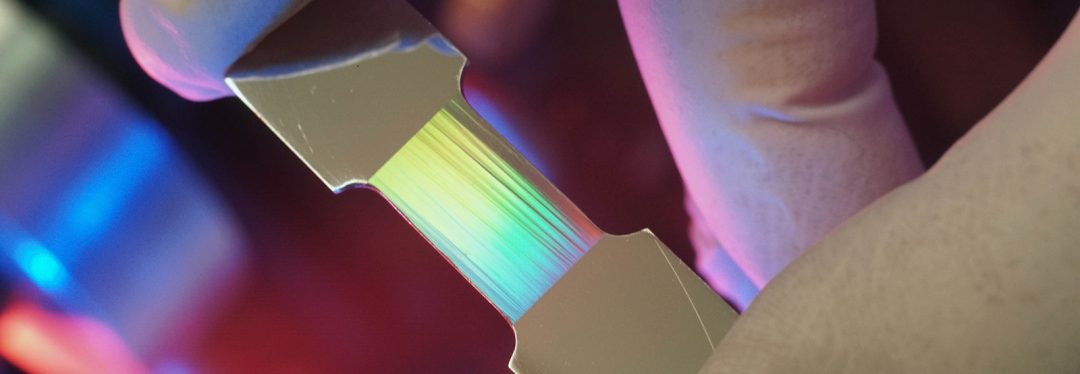The surface of materials can have an enormous influence on their function. If the external properties are changed, this also expands the range of possible applications. This is why materials scientists at Friedrich Schiller University Jena in Germany are researching how they can tailor the surfaces of different materials using laser technology. They are mainly focusing on laser-induced periodic surface structures, also known as LIPSS. This method can be used to create particularly tiny structures.
“When a surface is irradiated with a femtosecond laser – a laser with very short and intense light pulses – characteristic structures are formed at the point where the laser beam hits the surface”, explains Dr Stephan Gräf from Jena University.
These structures are much smaller than those reached using normal laser structuring because a laser beam cannot be focused as small as desired. The size of the structures depends, among other parameters, on the laser intensity and the laser wavelength used. Based on a careful adjustment of the laser beam parameters, the structures can be fabricated in an almost tailored manner.
Generally, the method works on many different classes of materials; however, up to now it could only be applied to flat surfaces. The Jena scientists have now succeeded in producing laser-induced periodic structures on strongly curved surfaces. “We have realized LIPSS on the surface of about ten micrometre thin carbon fibres – their diameter is hardly larger than the structures themselves”, says Gräf. “Furthermore, we were able to superimpose different types of structures and therefore to hierarchically shape the surface”.
These current findings will provide completely new possibilities in practical applications. For instance, carbon fibres are embedded in other materials such as polymers for manufacturing composite materials. To improve the strength of composite materials – so far they have been treated with chemicals. Thanks to LIPSS, their surface topography can now be specifically altered so that anchoring between polymer and embedded fibres can take place.
And LIPSS also positively influences the durability of materials: “By changing the surface topography, the friction coefficient can be reduced and wear can therefore be prevented”, says the materials scientist. “For example, more durable implants could be developed in this way”. Also the color can be changed in this way likewise the wetting properties of materials. They can therefore be designed to be more hydrophobic or hydrophilic. Based on these findings, Gräf is planning further research in this field.

















